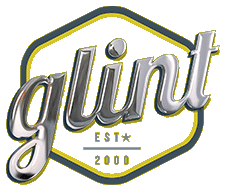Marketers often struggle between engaging content and deceptive headlines in the race to grab attention. It’s a dilemma as old as digital advertising—how far is too far when getting a click?
Clickbait has become synonymous with manipulation, promising sensationalism while delivering little substance. But not all catchy headlines are bad. When done right, a compelling copy can differentiate between an overlooked idea and one that inspires action.
The trick? Striking the perfect balance between clickbait vs. clever copy.
Defining the Clickbait Problem
Clickbait relies on curiosity gaps to lure readers into clicking. Think phrases like “You’ll Never Believe What Happened Next” or “Doctors Hate Him for This One Weird Trick.” These headlines are intentionally vague or misleading and often leave users feeling duped once they realize the content doesn’t live up to the hype.
A Nieman Lab article highlights how clickbait can erode trust in news and branded content. When people feel misled, they’re less likely to engage with future material, no matter how good.
In an era when authenticity is currency, clickbait doesn’t just fall flat—it can backfire. Consumers today are savvier, and they’re not afraid to tune out brands that overpromise and underdeliver.
The Power of Clever Copy
On the flip side, clever copy respects the audience’s intelligence. It uses humor, wordplay, curiosity, or cultural relevance to catch attention but delivers on the promise. Think headlines like “How Brands Are Winning by Losing Control” or “When Quiet Marketing Makes the Loudest Noise.”
According to an article by Constant Contact, brands that use original, high-quality, and relevant headlines see 5x more engagement than those using clickbait tactics.
What makes clever copy stand out? It’s rooted in strategy. It understands the audience, aligns with the brand voice, and pairs substance with style. Instead of misleading, it teases value, making the reader want to learn more.
Why the Difference Matters in Marketing
From social media captions to email subject lines and digital ads, headlines are often the first (and sometimes only) chance to connect with an audience. That means your message must be more than flashy—clear, relevant, and trustworthy.
For marketers, the takeaway is simple: Don’t just chase clicks—chase connection. Clever copy builds credibility. It turns passive viewers into active participants—ideally, loyal followers.
It also respects the long game. While clickbait might get short-term results, brands built on trust and creativity are the ones that endure. In an attention economy, your copy is currency. How you spend it says everything about your brand.
Culture Drives the Message
At Glint Advertising, culture plays a powerful role in shaping what resonates. Great marketing doesn’t just reflect culture—it anticipates it. That means knowing your audience’s mindset, values, and expectations before writing a headline.
You can stand out without selling out by crafting clever, culturally aware copy. And in today’s fast-moving media landscape, that kind of authenticity is not just refreshing—it’s essential when considering clickbait vs. clever copy.
Check Out Glint for More Insights
Explore Glint’s blog library to discover trends, tools, and strategies that help brands make meaningful connections.







